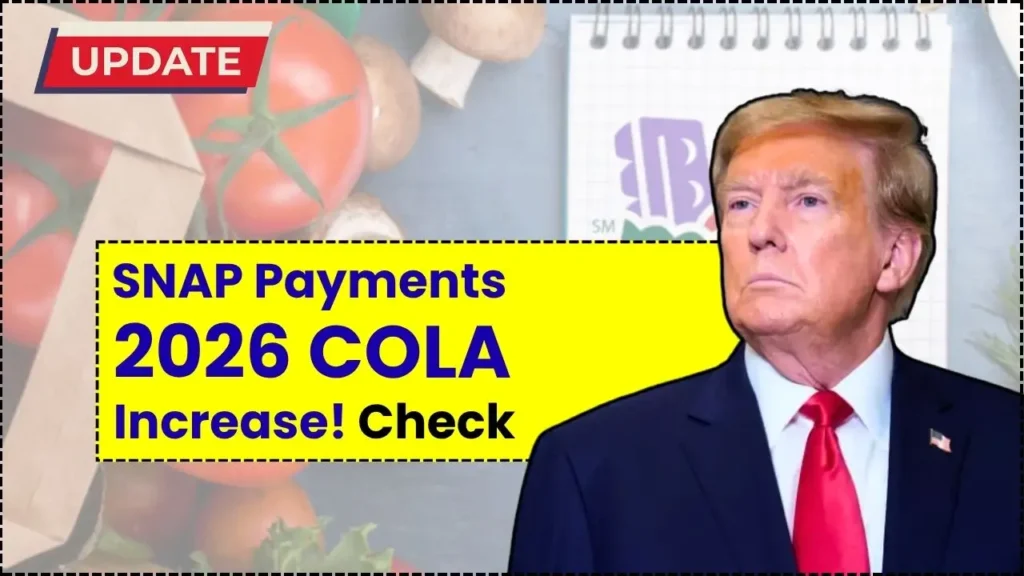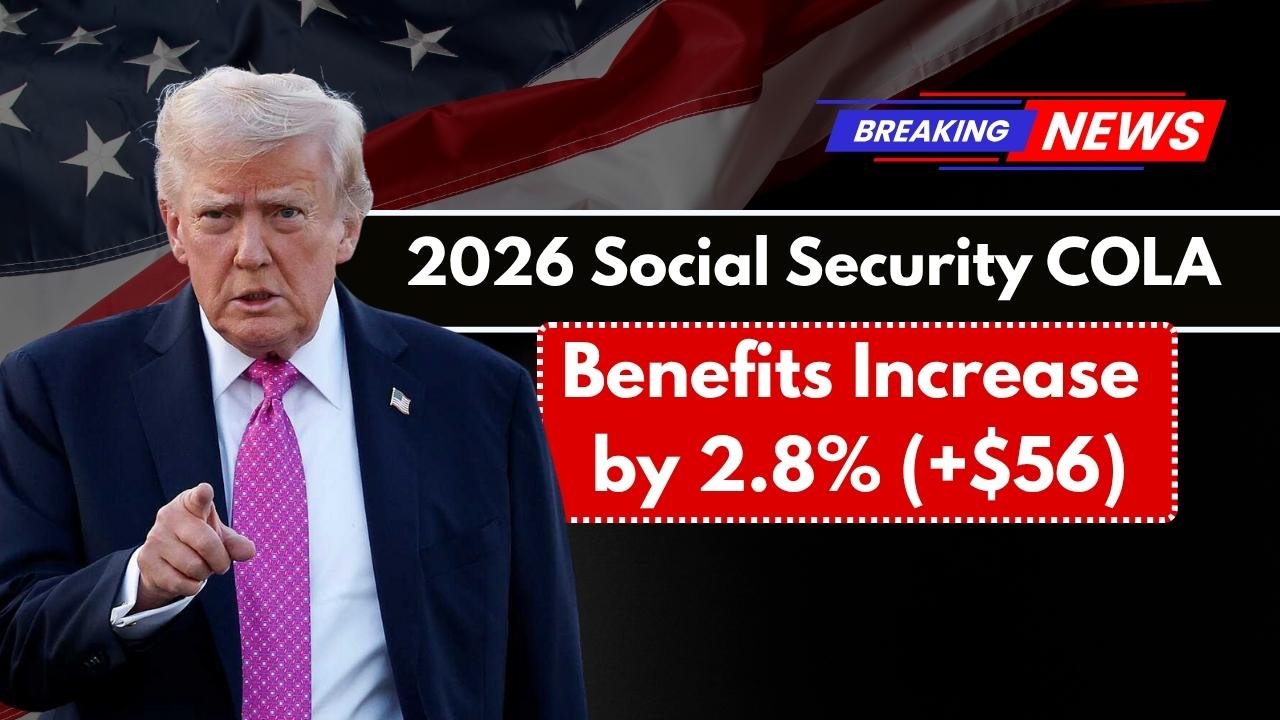Food Stamp Update: 2026 COLA Increase Brings Higher SNAP Payments This Month is the headline change millions of households were waiting for, and the increase is officially reflected in October issuances across states as the new fiscal year rules kick in. The annual cost-of-living adjustment recalibrates SNAP maximum allotments, minimum benefits, and income standards to better match grocery costs, so many recipients will notice a modest bump on their regular EBT deposit day this month.

This update is straightforward: the 2026 COLA took effect on October 1 and will apply through the end of the fiscal year, meaning most households will see the higher amounts automatically as long as eligibility and case details remain current. The change nudges maximums up in the 48 states and D.C., with higher caps in Alaska, Hawaii, Guam, and the U.S. Virgin Islands due to elevated local food costs. The minimum benefit for small households also ticks up, which can make a practical difference for seniors and single adults.
Table of Contents
Food Stamp Update
| Item | FY 2026 Detail |
|---|---|
| Effective Window | October 1, 2025 – September 30, 2026 |
| 48 States & D.C. Max (Household of 4) | $994 per month |
| Example Max (48 States) | 1: $298, 2: $546, 3: $785, 4: $994, 5: $1,183, 6: $1,421, 7: $1,571, 8: $1,789 |
| Alaska Max (Household of 4) | $1,285 (Urban), $1,639 (Rural 1), $1,995 (Rural 2) |
| Hawaii Max (Household of 4) | $1,689 per month |
| Guam Max (Household of 4) | $1,465 per month |
| U.S. Virgin Islands Max (Household of 4) | $1,278 per month |
| Minimum Benefit (1–2 People) | $24 per month |
The 2026 COLA is already cushioning grocery budgets, with higher SNAP maximums, a small bump to the minimum benefit, and refreshed income standards that kicked in with October issuances. If your case is active and your details are current, you don’t need to do anything your state will apply the new figures on your regular EBT date. To make the most of this update, keep your allowable expenses documented, report any household or income changes promptly, and check your state’s chart if you live in Alaska, Hawaii, Guam, or the U.S. Virgin Islands where caps run higher.
What Changed for October
Each October, SNAP updates flow from the Thrifty Food Plan and inflation data, which in turn set the new maximums, income thresholds, and allowable deductions for the year. For FY 2026, the increases are modest in the continental U.S., while non-contiguous states and territories retain higher caps to reflect regional pricing. If your case is active and unchanged, you do not need to reapply benefits adjust automatically under the new standards.
Not everyone gets the maximum, but the ceilings give a clear benchmark of what’s possible for each household size. In the 48 states and D.C., typical maximums rise to $298 for one person, $546 for two, $785 for three, and $994 for four, scaling up for larger families. Higher-cost areas particularly parts of Alaska see much larger caps, and that variance is intentional to match the real cost of a basic food plan.
Income Limits And Deductions
The COLA refresh also updates gross and net income standards and key deductions used to calculate your net income. Standard deductions, the homeless shelter deduction, and other allowable deductions (like medical expenses for elderly/disabled members, childcare, and shelter/utility costs) matter because they directly affect how much of your income counts. States may apply policy options like Broad-Based Categorical Eligibility, so always check your state’s current charts and notices.
When Higher Amounts Arrive
The effective date is October 1, but the increase shows up on your normal issuance day some states pay on one day, others stagger deposits across multiple days based on case numbers or last names. If you’ve already received October benefits, compare your EBT history or the notice attached to your case to see the updated figure. Recertifications or mid-month changes in income, household size, or expenses can also shift the posted amount.
Relation To Social Security COLA
SNAP’s COLA starts in October, while Social Security and SSI apply their annual increase to January payments (SSI reflects it at the end of December). If your cash income rises with the Social Security COLA, your SNAP budget may adjust at your next review, but it’s not a dollar-for-dollar reduction because SNAP subtracts allowable deductions first. Keep your documentation current to ensure your case reflects accurate net income.
Tips To Maximize Your SNAP
- Report deductible expenses such as rent, utilities, child care, and qualifying medical costs for elderly or disabled members so your net income is calculated correctly.
- Update household size, address, and income changes promptly; timely reporting helps the agency align your benefit with FY 2026 rules.
- If you’re in Alaska, Hawaii, Guam, or the U.S. Virgin Islands, review your jurisdiction’s table so you understand your higher cap and how additional household members affect it.
Key Numbers at a Glance
- Family of four maximum in the 48 states and D.C.: $994 per month; minimum benefit for 1–2 person households: $24 per month.
- Higher-cost jurisdictions: Alaska up to $1,995 (Rural 2) for a four-person household; Hawaii $1,689; Guam $1,465; U.S. Virgin Islands $1,278.
- Common 48-state maximums by size: $298 (1), $546 (2), $785 (3), $994 (4), $1,183 (5), $1,421 (6), $1,571 (7), $1,789 (8).
Remember that Social Security’s separate 2.8% raise arrives with January payments; any effect on SNAP will be handled at your next review and won’t automatically offset your benefits dollar for dollar. In short, this year’s adjustment won’t solve inflation on its own, but it does move benefits closer to real-world costs and can go further when paired with accurate deductions, smart meal planning, and timely case updates.
$4983 Direct Deposit Checks in 2025: Full Guide on Eligibility and Schedule for Americans
FAQs on Food Stamp Update
When did the new SNAP amounts start?
The FY 2026 update took effect on October 1, 2025, and appears on each state’s regular issuance dates. Most households will see the adjusted amount automatically without reapplying.
Do Alaska, Hawaii, Guam, and the U.S. Virgin Islands have different amounts?
Yes. Each has its own maximum allotment schedule, and Alaska varies by region (Urban, Rural 1, Rural 2) to reflect local food prices.
How do I know if I’m receiving the maximum?
Compare your household size to the current maximum table. Your actual benefit depends on net income after deductions and may be lower than the maximum if your countable income is higher.
Will Social Security’s new COLA change my SNAP immediately?
No. SNAP adjusts every October. Social Security’s increase applies to January payments, and any impact on SNAP occurs at your next review based on updated income and allowed deductions.

















